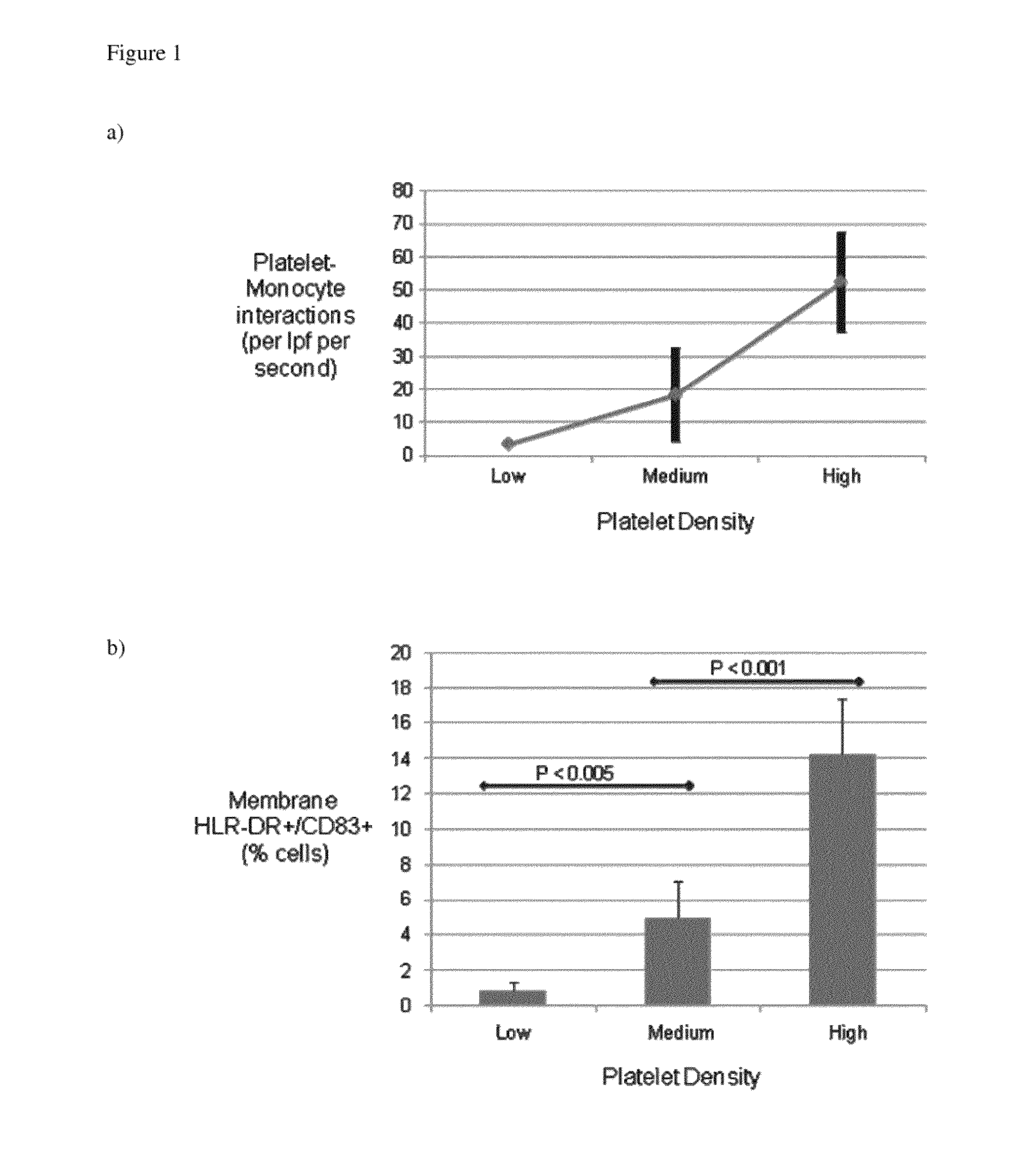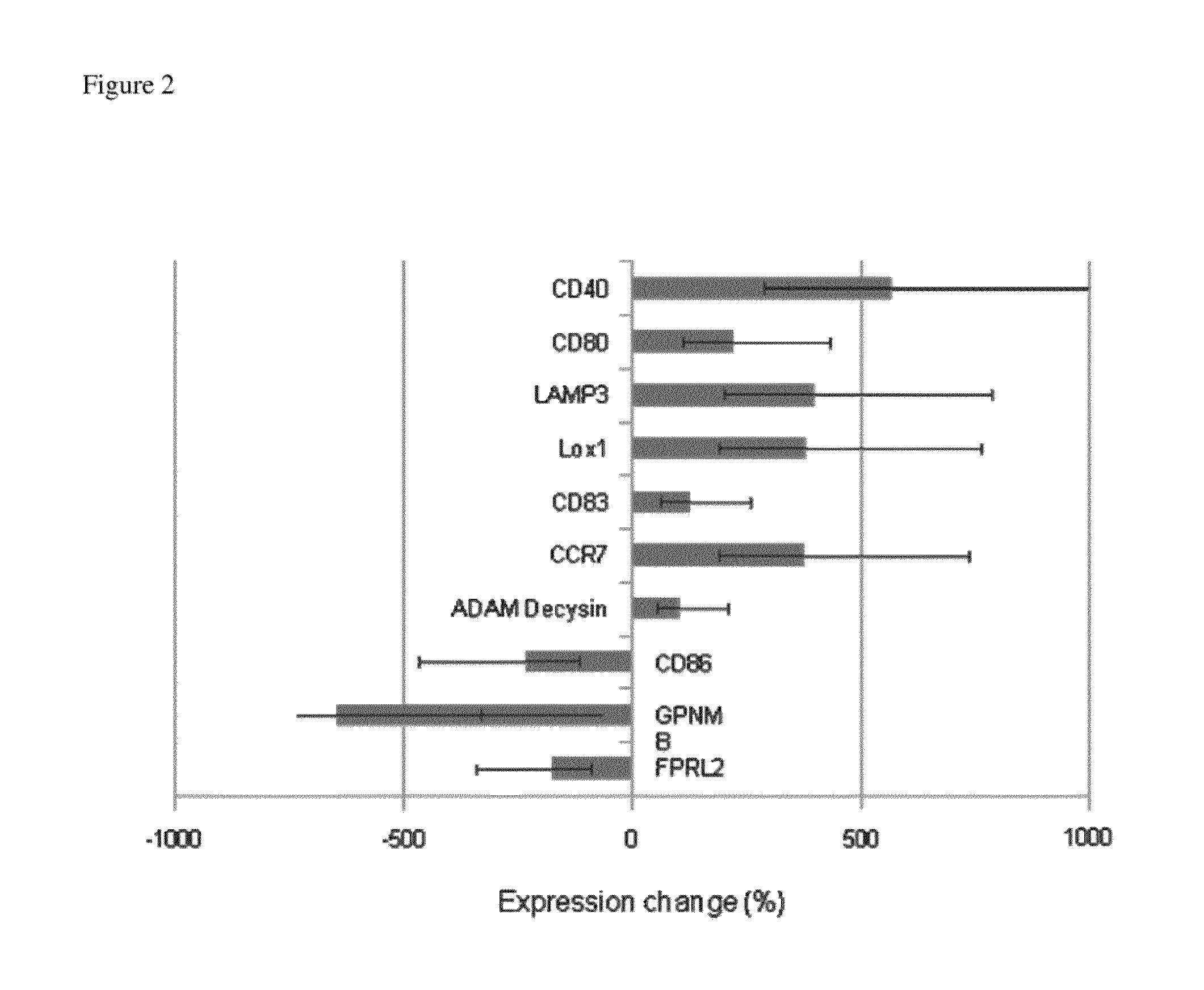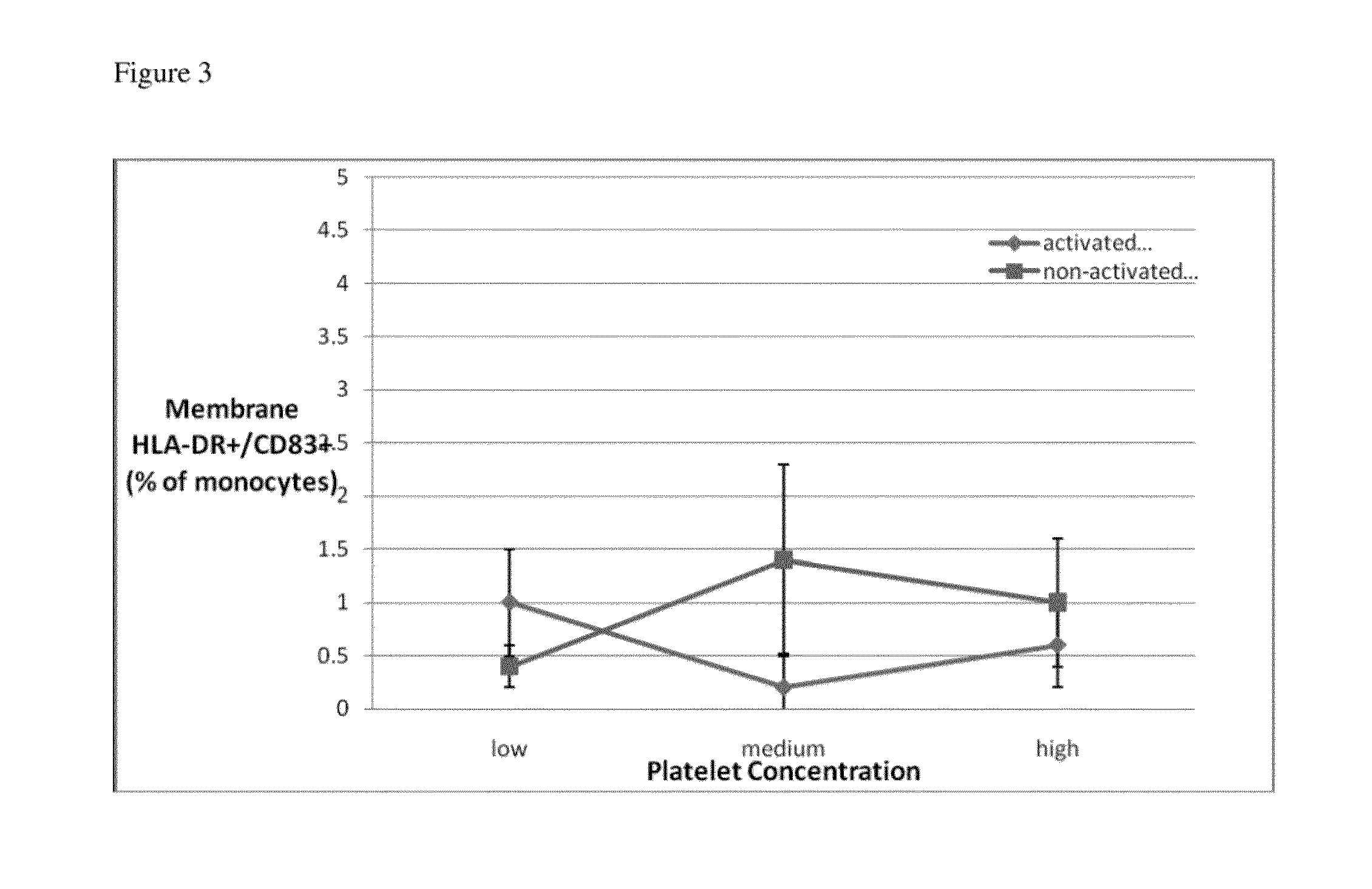Method for obtaining immuno-suppressive dendritic cells
a dendritic cell and immunosuppressive technology, applied in the field of dendritic cell production methods, can solve the problems of not being able to reduce the size of prostate cancer treated, the dc produced by the common cytokine method may not function effectively at the far lower cytokine concentration actually in patients, and the general clinical results are disappointing
- Summary
- Abstract
- Description
- Claims
- Application Information
AI Technical Summary
Benefits of technology
Problems solved by technology
Method used
Image
Examples
experiment 1
[0208]Shear Stress and Platelet Activation for Inducing Monocyte Activation
[0209]Materials and Methods
[0210]Procurement of Leukocytes and Platelets
[0211]All samples were acquired from young, healthy subjects not taking medications, including aspirin, known to influence platelet function. Samples were obtained under the guidelines of the Yale Human Investigational Review Board, and informed consent was provided according to the Declaration of Helsinki Peripheral blood specimens were collected through a 19-gauge needle from the antecubital vein into syringes containing heparin, then layered on Ficoll-Hypaque (Gallard-Schlessinger, Carle Place, N.Y.). Following centrifugation at 180 g, the interface containing the mononuclear leukocyte fraction was collected and washed twice in HBSS, then resuspended in RPMI-1640 medium (GIBCO) to a final concentration of 5×106 mononuclear cells / ml. Cells were utilized within one hour of being acquired.
[0212]Preparation of Platelet-Rich-Plasma
[0213]Who...
experiment 2
[0255]Identification of Further Molecular Markers for Immuno-Suppressive Dendritic Cells
[0256]Materials and Methods
[0257]Sample Collection and Monocyte Enrichment
[0258]Peripheral blood specimens were acquired from healthy subjects under the guidelines of the Yale Human Investigational Review Board, and informed consent was provided according to the Declaration of Helsinki PBMC were isolated by centrifugation over a Ficoll-Hypaque gradient (Isolymph, CTL Scientific). Monocytes were enriched from freshly isolated PBMC by: 1) plastic adherence for dexamethasone dose-titration experiments (purity: 71.6±5.6% CD14+); 2) CD14 magnetic bead positive selection (Miltenyi Biotec) for PUVA dose-titration experiments (purity: 88.1±3.5% CD14+), and; 3) Monocyte Isolation Kit II (Miltenyi Biotec) for LPS stimulation experiments (purity: 83.8±3.8% CD14+).
[0259]Generation of Monocyte-Derived Dendritic Cells (MoDC)
[0260]Monocytes were cultured at a density of 5×106 cells / mL in 6- and 12-well polystyr...
experiment 3
[0293]Identification of Further Molecular Markers for Immuno-Stimulatory Dendritic Cells
[0294]Patient Samples
[0295]Leukocytes from patients undergoing ECP using the UVAR XTS Photopheresis System (Therakos) were obtained under the guidelines of the Yale Human Investigational Review Board. Informed consent was provided according to the Declaration of Helsinki Aliquots were procured at 3 time points: before treatment (Pre ECP), immediately after 8-MOP / ultraviolet A (UVA) exposure (ECP Day 0) or after 18-hour incubation of treated blood mononuclear leukocytes (ECP Day 1) in a 1-L platelet storage bag (PL-2410; Baxter).
[0296]Normal Subjects
[0297]To determine whether ECP induces monocytes from healthy subjects to convert to DC, mononuclear leukocytes from normal subjects were examined in 2 ways. Leukapheresed leukocytes from normal subjects (N=3) were studied pretreatment (pre-ECP), immediately after ECP (ECP Day 0), and 18 hours after ECP (ECP Day 1). A desktop apparatus, incorporating a...
PUM
| Property | Measurement | Unit |
|---|---|---|
| width | aaaaa | aaaaa |
| height | aaaaa | aaaaa |
| width | aaaaa | aaaaa |
Abstract
Description
Claims
Application Information
 Login to View More
Login to View More - R&D
- Intellectual Property
- Life Sciences
- Materials
- Tech Scout
- Unparalleled Data Quality
- Higher Quality Content
- 60% Fewer Hallucinations
Browse by: Latest US Patents, China's latest patents, Technical Efficacy Thesaurus, Application Domain, Technology Topic, Popular Technical Reports.
© 2025 PatSnap. All rights reserved.Legal|Privacy policy|Modern Slavery Act Transparency Statement|Sitemap|About US| Contact US: help@patsnap.com



